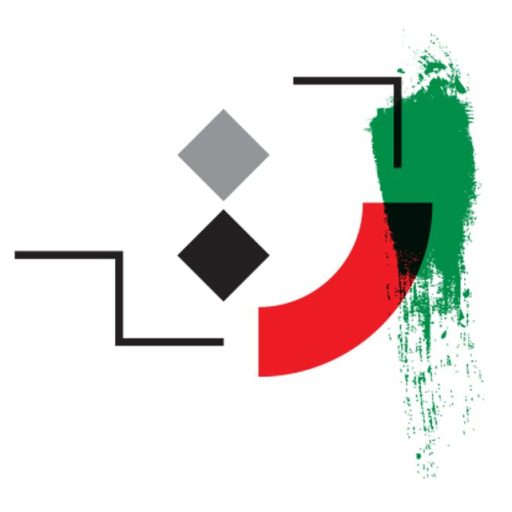Aydin Aghdashloo
Biography
Aydin Aghdashloo (born Oct. 3, 1940) contemporary painter, graphic artist, writer, cinema critique and designer He is the only children of Mohammad Beik Aghdashloo (Hajioff) and Nahid Nakhjavan. He was born in 1940 in the Afkharay quarter of Rasht. His father was one of the Caucasus migrant and the member of Caucasian Mosavat Party who took refuge in Iran after the victory of Russian Revolution and was employed by the Ministry of Roads. His father by observing the Aydin’s talent in painting sent him to the house of Habib Mohammadi, the painter who was living in Rasth. At the first session his father accompanied him, but he died in 1951 because of tuberculosis. Then after Aydin left Rasth for Tehran with his mother. He started the high school course in 1953 in Jam high school located in Qolhak quarter at the north of Tehran. Abbas Kia Rustami and Ali Golestaneh were his class mates. While he was studying, he attended in the painting classes of Monsieur Bazil too and when he was only 14, he sold his first tableau and from 16, he started to work in “Ashna” advertising Institute as graphic designer as well as an apprentice. After a while he was employed in the advertising section of Etellaat Paper, one of the most celebrated daily paper of Iran. When he was 19 he entered the Faculty of Fine Arts of Tehran University, but he left the university in 1987 under the excuse that the teaching is not as fruitful as he expects. He published his first article in the field of art criticism in the journal of Andisheh Honar under the supervision of Naser Vosooqi as chief editor and also started to criticize the poems of contemporary poets such as Ahmad Shamloo, Ahmad Reza Ahmadi, Akhavan Saales, Mohammad Ali Sepanloo under the pen name of Faramarz Khabiri. Some of his critical articles were hurtful and his manner of writing was under the influence of Jala-e-Al-e-Ahmad the celebrated contemporary writer. In 1972 he started to work in the Gom Advertising Company as a partner and then in 1974 he produced and performed a television program in the field of Plastic Arts for the Iran National Radio and Television under the title of “The Manners of Watching”. The program lasted up to the 1976. In 1977 he was assigned as the head of Tehran Contemporary Arts Museum but after ten days he submitted his position to Kamran Diba and he himself was appointed as the “Manager of Cultural and Artistic Affairs of Special Office of Iran Queen, Farah Pahlavi” and kept this position up to the victory if Islamic Revolution. During the time he was in Queen’s office he inaugurated the “Abbasi Museum in Tehran and he himself became the first head of the Museum. During the years of 1976 to 1978 he actively cooperated for the opening the museums of “Mirrors and Potteries”, Tehran Contemporary Arts Museum, Kerman Museum and KhorramAbad Museum. Along with governmental responsibilities he taught painting in the Conservatory of Fine Arts for the boys and Tehran Faculty of Decorative Arts. By the victory of Islamic Revolution and its ensued events, he left graphic designing and Governmental positions for a while. In 1980 he Shohreh Aghdashloo (Vaziri Tabar) and in the same year he started teaching in the Art Faculty of Alzahra University. In 1981 he married with Firoozeh Athàri, one of his students (graduated from Architecture Departments) and the fruit of this marriage is two offspring. By the Cultural Revolution he lost his seat in the university and due to financial problems, he started teaching in private classes. His classes were welcomed by a great number of students and many artists of new generation have been trained in his classes. Before the Islamic Revolution his works strongly inclined to the schools of Renaissance and Flandery, but by the passage of time and by the change of the concept of beauty in his mind, the Iranian art such as Negargari (Persian painting) and calligraphy, replaced by Italian Arts. Realistic re-creation of great and important works of the history of art mostly were formed Aghdashloo’s works in the first years of his life. At the beginning due to his theoretical attachment to these works, he did not infuse any renovating or changing in them but by the passage of time and by the formation of the thought of annihilation in him, those works were mingled with his personal ideas and his philosophy and took the form of a murky feature. After the Islamic Revolution of 1979 and by the beginning of imposed war most of the works of Aghdashloo were circling around the relics and items were at the edge of destruction and extinction. His works are known for showing the concept of death and gradual extinction and also due to re-creation of the celebrated classic works in a new surreal form.
- Birthday: 30.10.1940
- Birthplace: Tehran, Tehran, Iran
- Interview date: 26.01.2016 – 10.05.2016
Painter
Bahram Dabiri
Ali Akbar Sadeghi
Pariyoush Ganji
Podcast Episodes:
